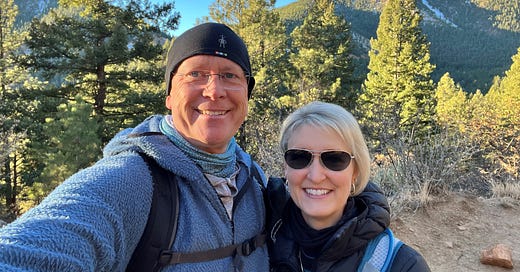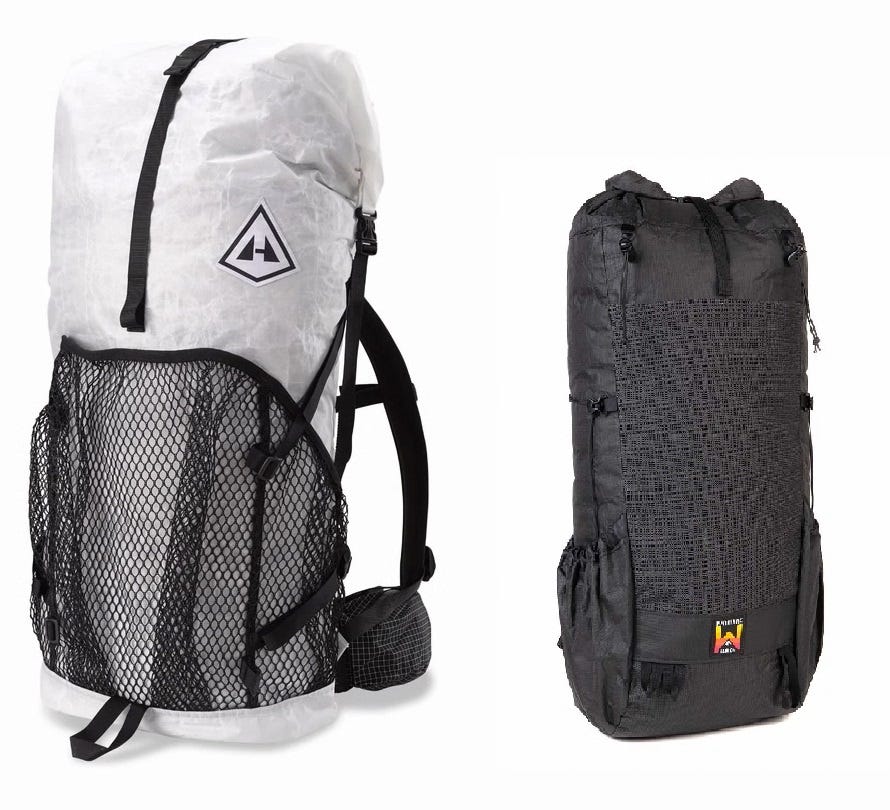The Big Three - Backpack
Of the Big Three gear decisions the backpack is perhaps the most personal choice. It really has to fit, and feel right, on your body. My choices are unlikely to work for you, and given I have two choices this will just make it that much more confusing if you try and copy me. I still think it worth writing about packs, if only to share some of the decisions and choices you get to make when choosing your own.
Framed or not
When I think of the backpacks that my parents used many years ago, I always think of framed packs. I remember seeing large aluminum poles running around the pack. Times have changed. Pack frames now come in high tech materials like carbon-fiber and exotic alloys and are hidden within the fabric of the packs. One of my pack choices is framed and the other is frame-less.
How you choose a comfortable pack will depend greatly upon the total weight carried. For sub-25-pound loads, generally, (UL) people choose frame-less packs, and for above 25-pounds they choose framed backs. The rational is a concept called load transference (sounds like a star trek technology). Frame-less packs place the majority of the load on the shoulder straps (some can be offset with hip belts). Framed packs are designed to maximize the weight transfer to the hips. Our hips are used to carrying our load, so the additional weight of the pack, whilst substantial, is a small proportion to the hip joints normal load carrying, whereas the shoulders do not usually carry large loads and so a pack that burdens the shoulders is substantially increasing the load on your body in a location that it is not really accustomed to being loaded.
So, my big pack is framed, and my medium pack is frame-less.
Material choice
Currently UL packs are made from two similar materials, DCF and Ultra. The main differences can be summarized as DCF is lightest, they all are strong, Ultra has greater puncture and abrasion resistance and is more environmentally sensitive in its manufacturing. The trend seems to be towards Ultra, you will see Ultra 100,200 and 400 being used, these numbers represent grams per square meter of fabric.
My big pack is made of DCF (being bigger I was more sensitive to the fabric weight), my medium pack is a combo of Ultra 200 and 400.
Size
I distinguish size from volume, as packs need to be sized for your torso. The torso length is measured between top of hips and top of shoulders. This length must then be matched to the pack to determine fit. Have a pack matched to your torso will optimize the weight distribution between shoulders and hips. Most good backpack manufacturers will offer a variety of pack lengths.
Belts and harnesses
The greater your pack weight the greater your need to distribute the weight around your body. Several options exist depending upon the manufacturer of your packs. I have found simple shoulder straps combined with a wide hip belt and sternum strap works in my body. Again your mileage may vary. I suggest going to your local outfitter and trying out the options to find what fits you.
Volume
This is the last decision to make, and it can only really be made when you have dialed in the rest of your gear. The pack volume is going to change based upon the weather conditions and carry durations anticipated. Warm weather sleep systems, and clothing are more compact, and the number of days food you carry will depend upon how often you plan to resupply. A rough guide is to think of each day of food being a liter of space. my medium pack is a 26-38 liter one and my big pack is 35-55 liter. Remember that it’s not just the volume of the interior that is important but all the pockets and attachments you plan to use as well. For example, I like to store my stove and rain gear in the outside for accessibility, so I don't need to accommodate their volume in the main pack section.
My choices
Big pack: Hyperlite Mountain Gear 3400 Windrider
Medium pack: Waymark EVLV Ultra 38L
I add the optional padded hip belt and two hip pockets to the EVLV.





